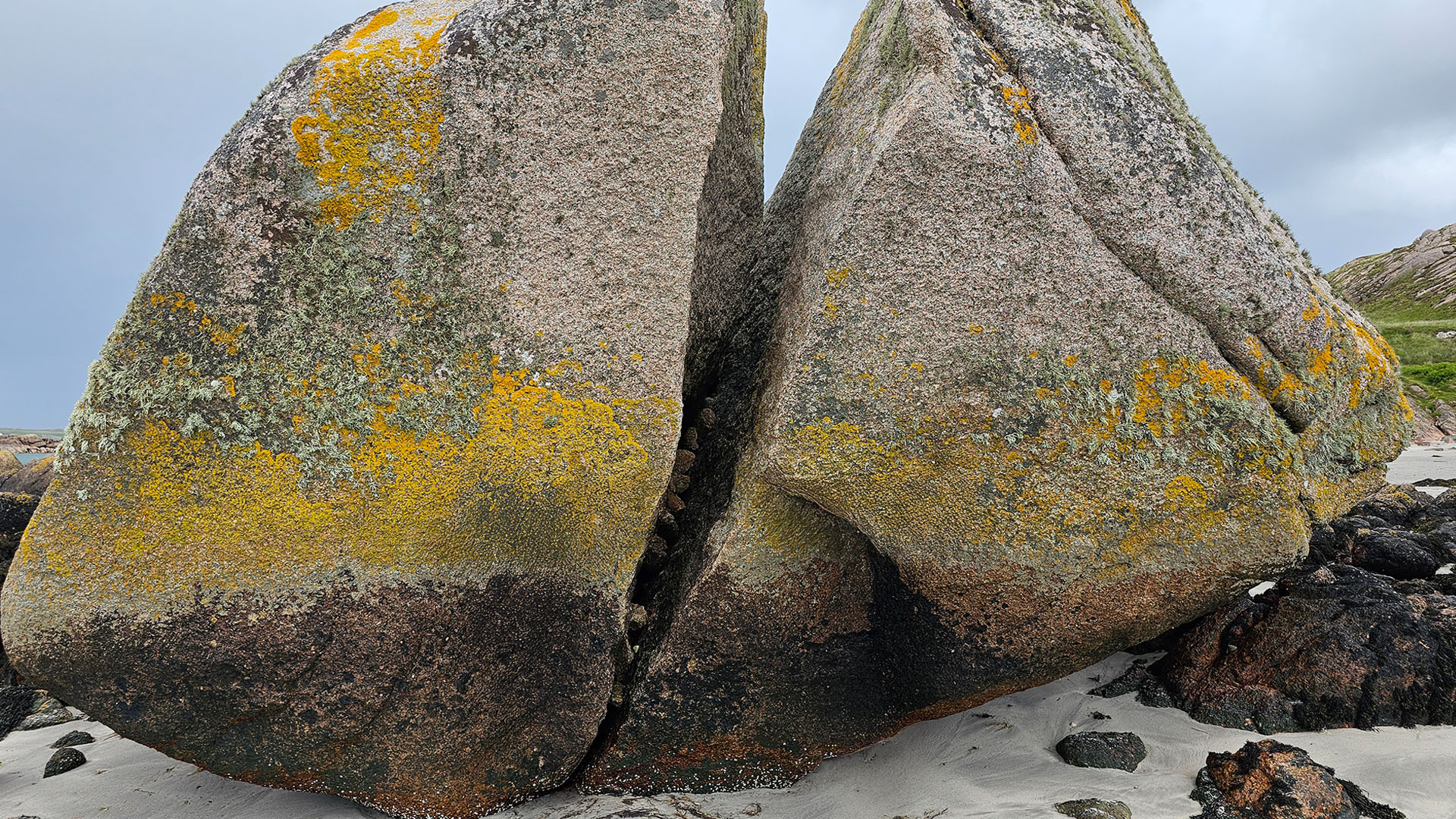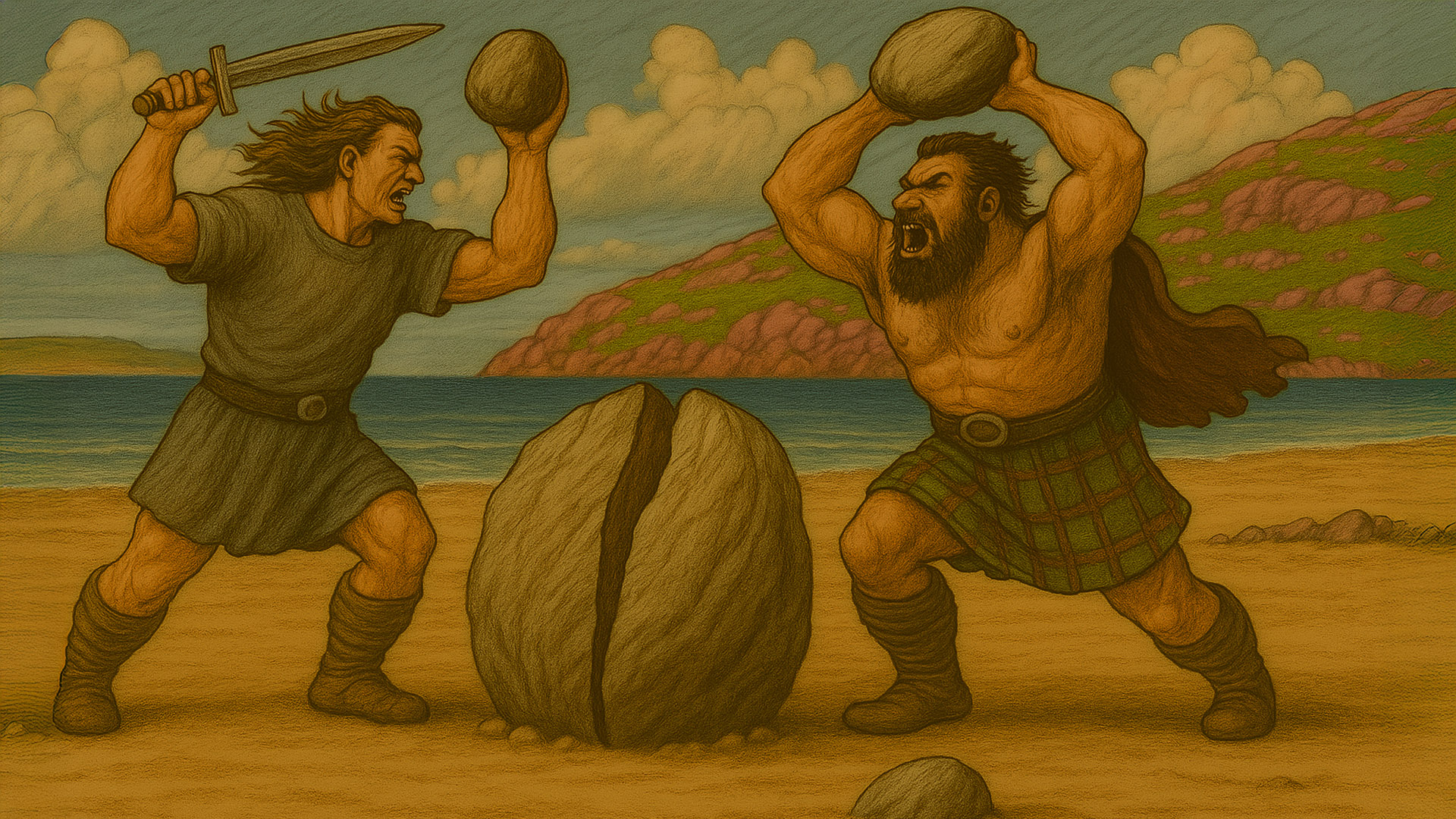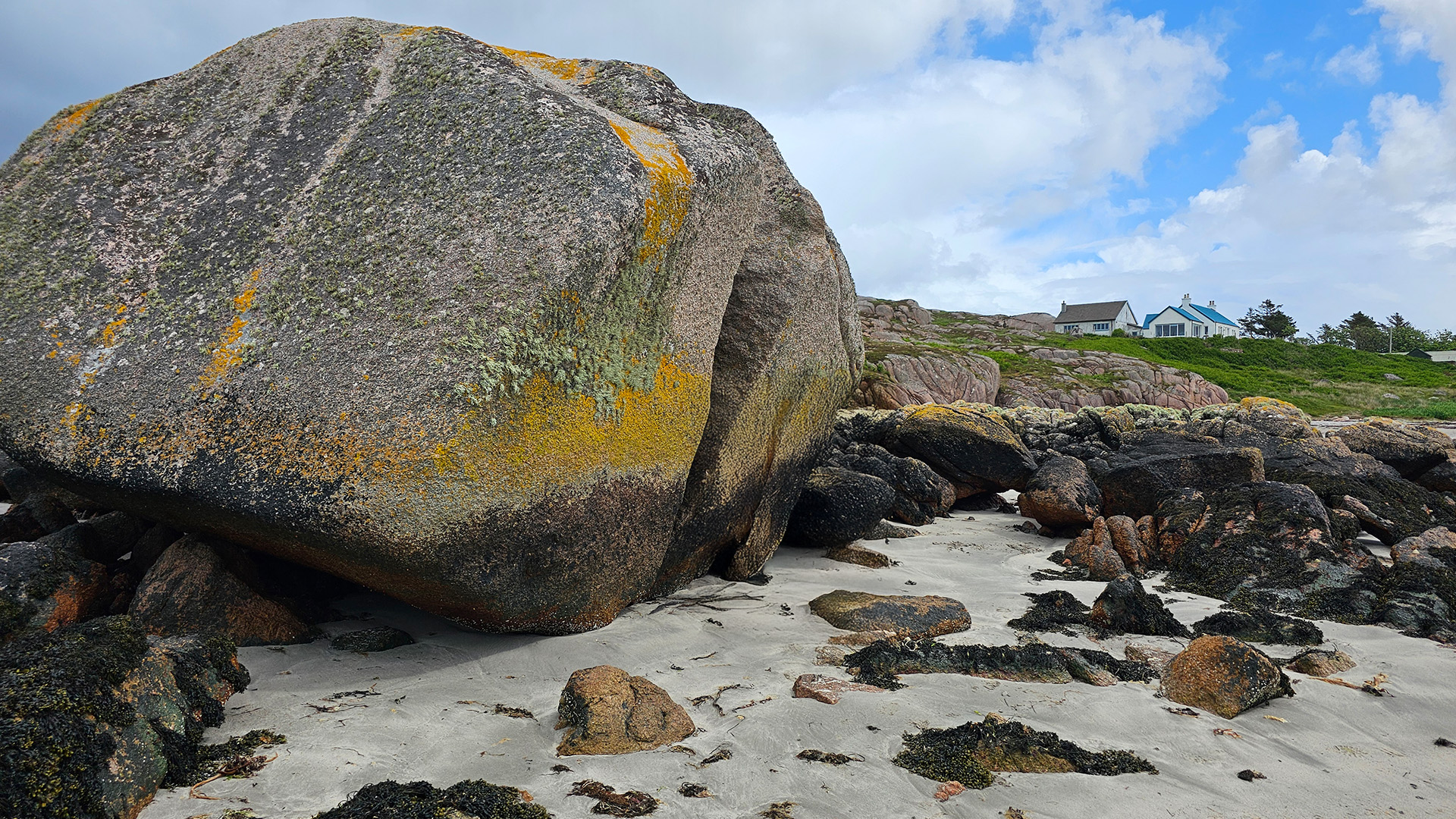Nestled on the rugged shoreline of Fionnphort beach on the Isle of Mull lies a curious and imposing natural landmark known by several names—Fingal’s Rock, the Sword Stone, and the Coffee Bean Rock. This enormous pink granite boulder, famously split down the middle, is more than just a geological oddity; it is a silent witness to the ancient natural forces that shaped the landscape of Scotland and a keeper of age-old stories of giants and battles that have been whispered through generations. This post will take you on a journey into the rich tapestry of legend, myth, and science that surrounds Fingal’s Rock, revealing why it remains a captivating stop for visitors exploring the Isle of Mull.

The Coffee Bean Rock with its large crack down the middle.
The Geological Story of Fingal’s Rock
Fingal’s Rock is a prime example of what geologists call a glacial erratic. These are large boulders transported from their place of origin by glacial ice and deposited in a new location as the glaciers melted at the end of the last Ice Age, approximately 10,000 years ago.
The rock itself is composed of pink granite, a type of igneous rock that is abundant in the Ross of Mull region to the northeast of Fionnphort. This suggests that the rock did not originate on the beach where it now rests but was carried there by glaciers moving across the landscape. As the ice sheets advanced and retreated during the Pleistocene epoch, they picked up rocks and debris, sometimes transporting massive boulders over great distances before depositing them when the ice melted.
Fingal’s Rock’s striking split down the middle is a result of natural weathering and fracturing processes. The harsh coastal environment—salt spray, freeze-thaw cycles, and occasional storms—has gradually widened natural cracks in the granite over centuries, giving the rock its dramatic appearance.
Local Quarrying and Human Impact
Fionnphort and its surrounding landscape have a long history of quarrying and human activity, which has shaped the area over time. While Fingal’s Rock remains a striking natural feature, local legend tells of a dramatic event in the 19th century when quarry workers, upset over the loss of a contract, allegedly used gunpowder to split the rock in two. Though this story is part of local folklore without verified historical evidence, it adds to the rich tapestry of human interaction with this natural landmark. Today, Fingal’s Rock stands as both a natural wonder and a reminder of the complex relationship between people and the environment.

Fingal and Finn MacCool battle above the iconic pink granite boulder — split by legend, resting in the sand of Fionnphort beach.
The Legends and Myths of Fingal’s Rock
Fingal’s Rock is steeped in the rich mythology of Scotland, especially in stories relating to the legendary hero Fingal, whose name inspired this and other geological features in Scotland and Ireland. According to local legend, the rock was hurled across the sea during a fierce battle between Fingal and his rival giant, often called Finn MacCool in Irish tales. These myths speak of an ancient rivalry where gigantic stones were thrown as weapons, shaping the landscape and leaving behind boulders like this one as monuments to their conflict.
While some versions of the tale simply portray Fingal as a giant warrior battling enemies, others say the split in the rock occurred when Fingal struck it with his sword during the heat of battle. These stories have been passed down orally for generations, blending history, myth, and imagination to create the fascinating folklore surrounding this landmark.
It’s important to note that the stories about Fingal and Finn MacCool vary by region and storyteller, but what remains consistent is the theme of giant heroes shaping the land with their epic feats.

Fingal’s Rock on Fionnphort beach — a legendary boulder beneath Mull’s coastal cottages, perfect for a scenic stroll and a dose of myth.
Visiting Fingal’s Rock Today
For tourists visiting the Isle of Mull, Fingal’s Rock offers a unique glimpse into both natural history and Scottish mythology. The site is easily accessible from Fionnphort village and is a popular spot for photographers, hikers, and anyone interested in the mysterious stories of the Highlands and Islands.
When you stand before the massive, split granite boulder, it’s easy to imagine the ancient battles of giants and the slow, inexorable forces of nature that have sculpted this part of Scotland. Whether you come for the geology, the legends, or simply the stunning coastal views, Fingal’s Rock is a memorable highlight on any trip to Mull.
Conclusion
Fingal’s Rock at Fionnphort is much more than just a rock on the beach. It is a testament to the powerful natural forces that shaped Scotland’s landscapes and a symbol of the rich storytelling tradition that keeps the history and myths of the Highlands alive. As you explore the Isle of Mull, take a moment to visit this remarkable boulder, hear its stories, and appreciate the blend of science and legend that makes it truly special.
Step into a world where ancient legends breathe and history whispers from every stone. This enchanting book invites you on a captivating journey through the heart of Scotland's Inner Hebrides, a land steeped in magic and timeless tales.


